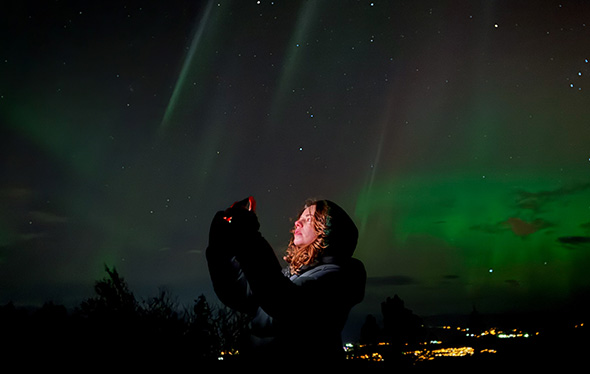Northern Lights Viewing Tips

Make the most of this rare opportunity!
Predicting the appearance of the northern lights is a bit like predicting the weather—scientists can see the conditions but can’t always be sure exactly what will happen in a particular place. It takes a bit of luck to spot the northern lights but here are some tips that can help you make the most of your chances.
- The best chance to view will happen around the fall equinox, in September, but the odds are increased all year long.
- Check the solar forecast on a website like auroraforecast.com—the higher the number for the mid latitudes, the better the chance for the northern lights to make a more southernly appearance.
- Check your local weather forecast—you’ll need cloudless skies to get a good look at the northern lights.
- If you can, find somewhere dark, away from bright artificial lights. The aurora will stand out more clearly in a darker sky.
Speaking of light, the brightness of the Moon can affect your viewing, too. If it happens to be a day when the moon is in its new or crescent phase, that will help you see any auroral activity. Here’s one place you can check the phase of the moon.
PRO TIP: If the forecast called for northern lights but you can’t spot them with the naked eye, try grabbing your camera! Often, a camera can “see” the aurora even when you can’t. Make sure you switch to night mode for best results.
